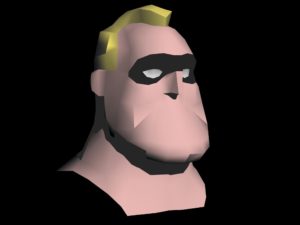Tweaking patterns and optimising layouts
 I haven’t been idle since my last post, with the first head finished I went on to adapt it as a general male head, and then produced a second character head this time for Mr Incredible but designed to use the same dimensions at the base of the neck.
I haven’t been idle since my last post, with the first head finished I went on to adapt it as a general male head, and then produced a second character head this time for Mr Incredible but designed to use the same dimensions at the base of the neck.
With the heads complete it was then on to the body and some design work on batman’s body to remove the spiked gauntlets on his forearms, to remove some mismatches, to formalise the bulge (it was a fortuitous accident on Batman) and to hopefully address the ankle twisting issue.
Armed with what is now a general muscular male body, I then started modifying the individual pieces include the colour changes to match the costumes and then it was on to producing the patterns. The way I typically work, since I am producing one offs or low numbers is to print the pattern, is to trace the pattern onto the fabric and to either scissor or hot cut. If I am hot cutting I use a tracing paper interleave sheet between the pattern and fabric in order to protect the pattern from burning and if I am working with black and other dark fabrics the tracing and cutting is done on a light box. All this means that I layout my patterns to minimise cutting waste, to get the optimum orientation and to have a sheet is dedicated to a particular colour. In order not to waste paper I stack patterns on an individual sheet differentiating the layer by colour and or line dashes. Finally the patterns are limited to 148cm wide (the usable width of the fabric) and a maximum 350cm long (the length of my cutting area), all of which leads to the final pattern sheets taking some time to layout.

You must be logged in to post a comment.